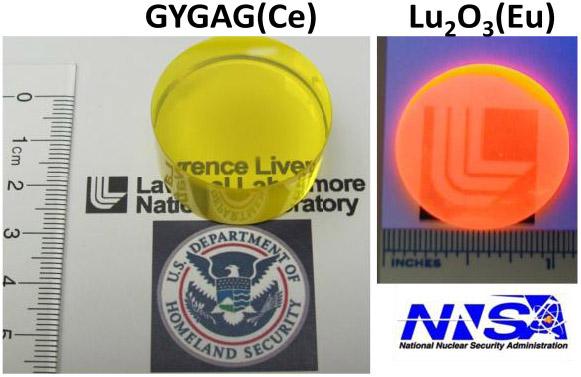Widespread use of single crystal inorganic scintillators is seen in medical imaging, high energy physics, and environmental radiation monitoring applications. These crystals are typically hygroscopic requiring air-tight housing for handling and their fabrication is costly.
Transparent polycrystalline ceramics of rare earth garnets show promise for easing fabrication and reducing costs as well as allowing customization of fabrication components. Since garnets are oxides, they offer excellent handling and fabrication advantages, compared to the more commonly employed halide scintillators.
Transparent ceramics are polycrystalline optics formed by consolidation of nanocrystalline precursors into a fully dense solid. Transparent polycrystalline ceramics not only allow production costs to be substantially reduced, but permit the fabrication of compositions that do not melt congruently and are, therefore, unobtainable via melt growth. Furthermore, activator concentration and uniformity can be considerably increased over melt-grown crystals.
Transparent ceramic fabrication allows the production of gadolinium- , lutetium-, and terbium-based garnets which are difficult to grow by melt techniques due to phase instabilities. Phase stabilization of the garnets is accomplished by the addition of the intersubstitutional ions, Gallium and/or Scandium.
Scientists have developed many versatile and scaleable fabrication methods. One includes using Flame Spray Pyrolysis (FSP) to produce feedstock which is readily converted into phase-pure transparent ceramics. The FSP nanoparticles are formed into a green body, vacuum sintered, then hot-isostatic pressed into optically transparent parts.
The transparent ceramic scintillators have been found to provide a surprisingly high light yield which results in gamma ray spectroscopy energy resolution superior to known oxide scintillators.
- Reduced cost of crystal fabrication
- Phase stabilization and reduced precision requirements of stoichiometric ratios during fabrication
- Customization and therefore optimization of materials
- High gamma ray spectroscopy energy resolution
Transparent ceramics are ideally suited to gamma ray spectroscopy, but can also be used for radiography, computed tomography applications and as laser gain media for lasers including high average power lasers, and as specialized optical components such as Faraday rotators.
Scientists have fabricated and characterized a number of transparent ceramic scintillators. References listed below for more information.
U.S. Patent 8,461,535.
U.S. Patent Publication No. 2009/0302225.
Cherepy, N.J. et al. (2010) "Transparent ceramic scintillators for gamma-ray spectroscopy and radiography"
Cherepy, N. J. et al (2010) "Transparent ceramic scintillators for gamma spectroscopy and radiography," Proc. SPIE Vol. 7805, pp. 78050I.



